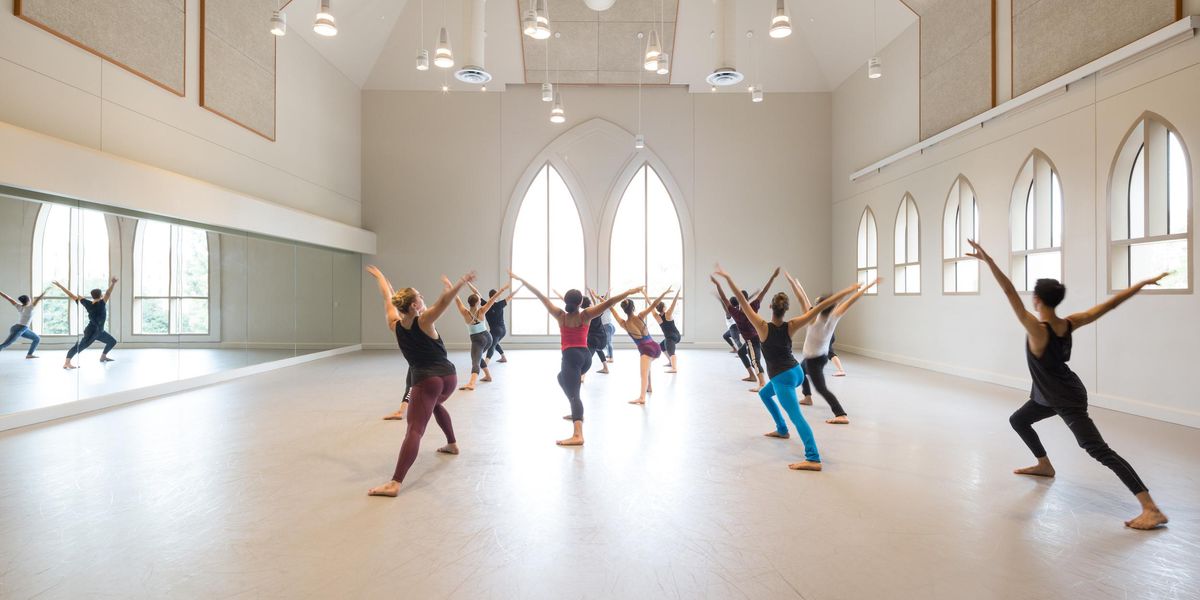Reimagining a Classic
Holiday Inn
pairs tap shoes with jump ropes and firecrackers.
Corbin Bleu and Bryce Pinkham play song-and-dance partners Ted and Jim. PC Jenny Anderson, Courtesy Polk & Co.
It didn’t take much to put Denis Jones in a 1940s frame of mind for Holiday Inn, the New Irving Berlin Musical. “A lot of my esthetic is informed by that period,” notes the choreographer. “To say I was an admirer of the golden era of film musicals as a child is like a crazy understatement—I was actually obsessed with them. Gene Kelly, Fred Astaire, the whole gang.”
Astaire, of course, was in the original Holiday Inn, the 1942 movie that paired him with Bing Crosby in the story of song-and-dance partners who split up when the singer buys a farm. He soon realizes his property is more suitable for an inn, which he decides will operate only on holidays—thus the name, appropriated a decade later by the hotel chain. Holiday Inn‘s gimmick was less a plot point than an excuse for a slew of landmark Irving Berlin holiday songs—think “White Christmas” and “Easter Parade.” There was also a dance classic, the Fourth of July number in which Astaire’s tapping is accompanied by exploding firecrackers. The Broadway version, playing at Studio 54 until January 14, retains these iconic numbers and adds other Berlin tunes to fill out the story, reworked by Gordon Greenberg and Chad Hodge.
Greenberg, who is also the director, has collaborated frequently with Jones—this is their fifth show together, and Jones’ second outing as a choreographer on Broadway. (His first was the sadly underappreciated Honeymoon in Vegas.) After prior iterations in Connecticut (at Goodspeed) and Missouri (at The Muny), it’s arrived on Broadway under the auspices of the Roundabout Theatre Company, with Bryce Pinkham, of A Gentleman’s Guide to Love and Murder fame, as the singer, Jim, and Corbin Bleu, of High School Musical fame, as the dancer, Ted. Jones sees a great advantage to working with an institutional theater like Roundabout: “We know we’re running at least till January,” he says. “Having a guaranteed run takes a certain amount of pressure off.”
But the pressure and pitfalls of reimagining a classic remain. “In most cases,” Jones says, “our treatment of various songs is quite different from what was in the movie.” There are also new contexts for songs that weren’t in the movie. “Dancing Cheek to Cheek,” which Berlin wrote for Astaire and Ginger Rogers in Top Hat, is now a big ballroom number, which Jones tackled without recourse to the original. The song comes at a point in the plot that allows Jones to transform this quintessentially romantic number into rambunctious comedy. “But in something like ‘Easter Parade,’ ” Jones notes, “it would be reckless not to have women parading in beautiful hats with the gentlemen in boaters—that is what the song is.”
Jones revisits yet another indelible Astaire number, the firecracker dance, which is said to have required 38 takes to shoot. “It’s one of those moments from the film,” he says, “where if you don’t explode some firecrackers for people, they will be annoyed with you.” New York’s fire marshals wouldn’t countenance actual firecrackers in a crowded theater, so Bleu’s firecrackers are simulated with technology. But there’s nothing simulated about his expert tapping. “You want to deliver, as best you can, a theatrical version of what the film did so beautifully,” Jones says. “The audience comes in with a certain expectation, and we certainly shouldn’t disappoint them.”
Jones, who started tap very early, feels particularly at home in the style. “It was my first love,” he says. And tap shoes fly—sometimes literally—throughout the show. In the Christmas Eve scene, when Jim’s showbiz friends arrive to help decorate the inn, they cheer him up with “Shaking the Blues Away,” from the 1948 film Easter Parade. Christmas-tree garlands become dance props, and the ensuing tap-dance/jump-rope number brings down the house. The stage throbs with seven dancers courting disaster, twirling garland jump-ropes and skipping and tapping simultaneously.
“Their safety is of utmost importance to me,” Jones says. “…But I do like danger. I’m attracted to things happening onstage that are surprising, that verge a little bit on danger.” Of his rope-skipping tappers, he says, “I’m so impressed that they’re able to accomplish that.” But he knows that sometimes they won’t.
“If you create a number where there’s jumping ropes and juggling, throwing things and catching things,” he concedes, “occasionally something’s going to go wrong.” And he tells the dancers, “Don’t be afraid of that.” Of course, he wants them to get it right. But if now and then they don’t, “That’s fine.”




